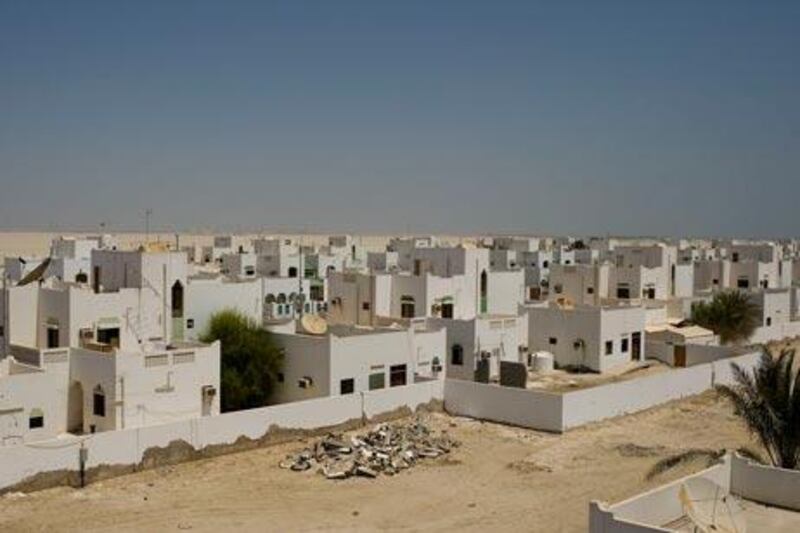AL MIRFA // Western Region Municipality is spending Dh4 billion (US$1.09bn) to upgrade and rebuild more than 3,200 homes in a bid to improve living conditions for some 7,000 Emirati families. The project, which will include villas in the six districts comprising Al Gharbia, will affect about 98 per cent of all housing units there, according to the municipality.
"The idea is basically to provide proper well-being and comfortable living for the residents," said Chafiq Allaoui, the executive director of strategic planning for the municipality. The total investment is half of the municipality's Dh8bn budget for an intensive five-year plan to build an infrastructure and spur economic activity. Currently, thousands of government-owned villas occupied by local families are in various levels of disrepair. Residents have complained about problems in their buildings' foundations and some of the homes have even been abandoned for years.
"I understood from studies that at some stage, there was a gap for 10 years when no houses were built in the whole region, so you have some houses that are over 25 years old," said Mr Allaoui. In many cases, the harsh desert climate has rapidly accelerated the deterioration of the buildings. Anton Tutunejean, the municipality's construction systems supervisor, hoped residents would appreciate the Government's investment.
"We want to have the people from here stay here instead of going away," he said. "This is a good, nice step to help locals. We're pushing the Western Region to grow up." Some minor reconstruction work such as filling cracks and repainting has already begun. Meanwhile, assessments are also being performed to decide whether some buildings should come down. Mr Allaoui said about 1,200 buildings may eventually be demolished and replaced by modern structures, but those built within the last decade were mostly still structurally sound.
"We're not rushing into anything," he said. "If you destroy something, you have to provide an alternative, so we are trying to co-ordinate with other entities, like the Abu Dhabi housing centre, to see if there would be alternative accommodations if needed." Ibrahim al Hamadi, 26, has waited three months to move into a refurbished villa in Al Mirfa. In two weeks' time, the police office worker will move in with his wife, five young children and a live-in maid.
When he acquired the property in March, the home was filthy after having been abandoned. "The last family left that property four years ago and since then it's been empty," he said. "The weather and bad conditions destroyed it more. It was very dirty inside, but [the municipality] pretty much resurrected the house and it's like new now." For the time being, maintenance has begun in most areas except for Liwa, so as not to inconvenience families staying in their summer residences.
"We prefer to wait until the beginning of the academic year, once people revert to their permanent residences, to start the physical work," Mr Allaoui said. Al Gharbia comprises roughly 80 per cent of Abu Dhabi emirate although only eight per cent of the population lives within its 60,000 sq km. About 110,000 people reside in Al Gharbia, a quarter of whom are Emiratis, according to municipal estimates. The region is forecast to expand its population three and a half times by 2030.
@Email:mkwong@thenational.ae







